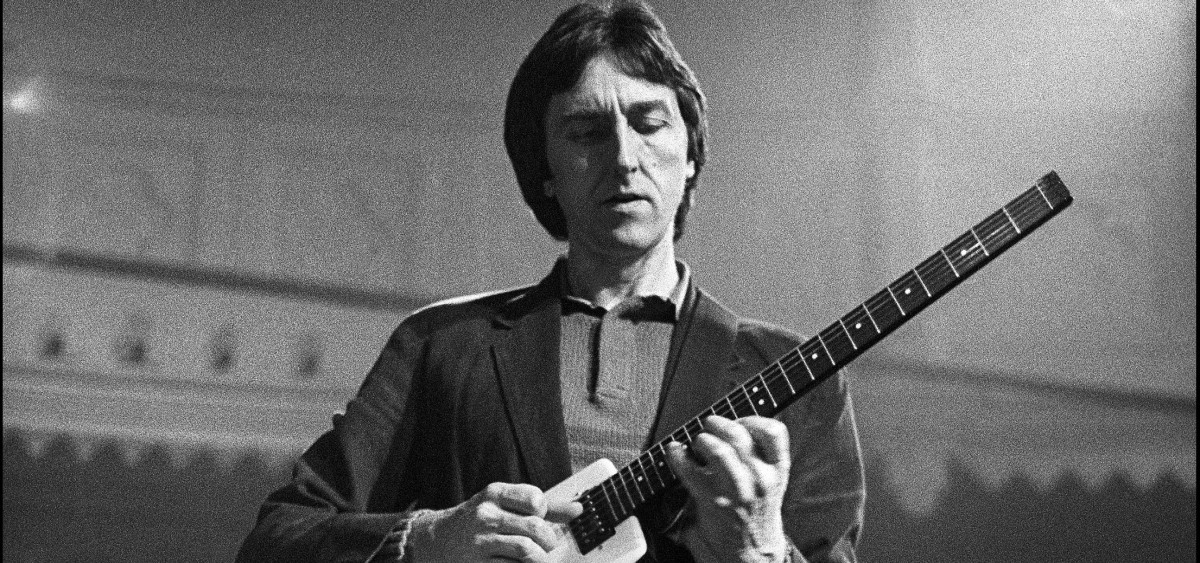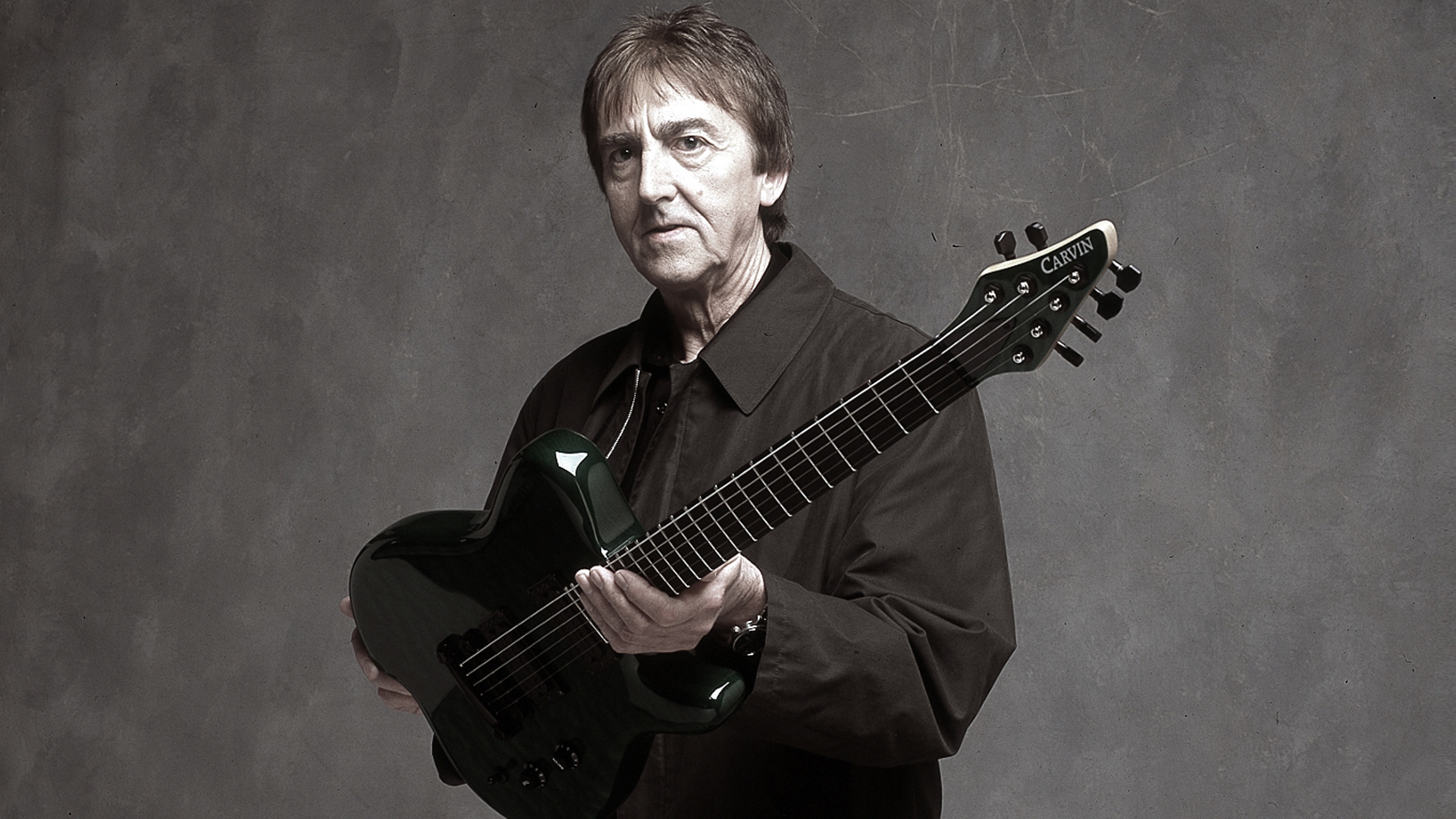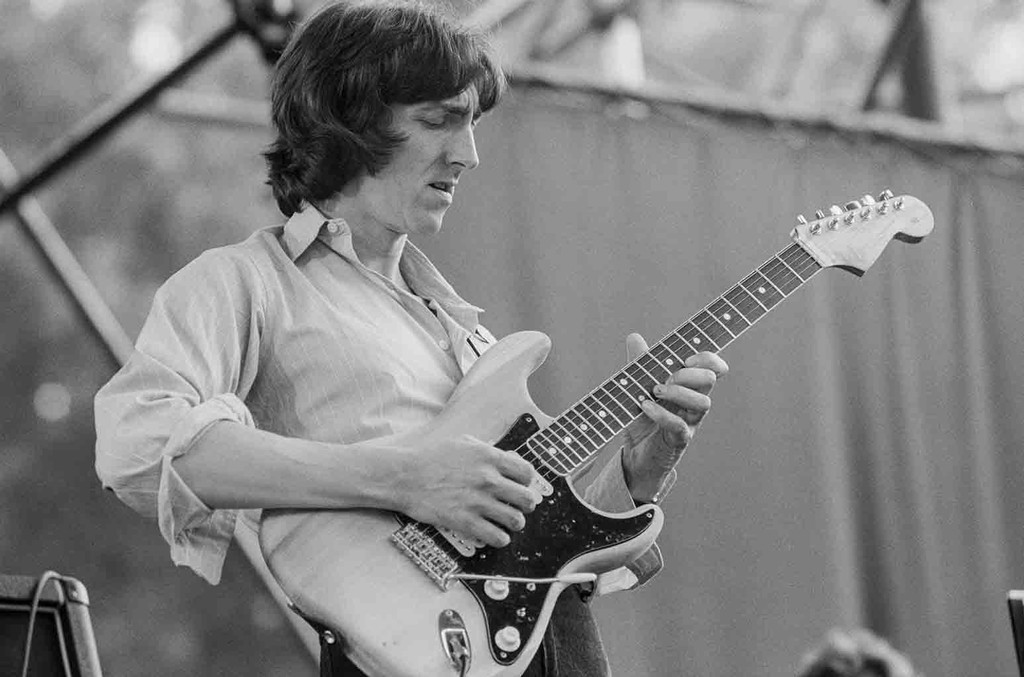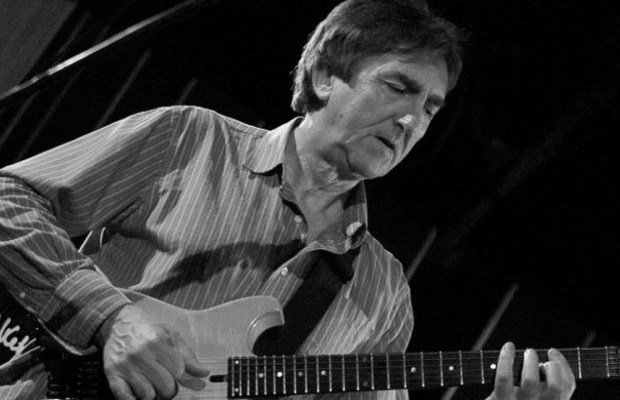You may not have heard of him, but Allan Holdsworth is one of the most interesting, unique and all-round terrifying guitarists of all time. His music is certainly an acquired taste but once acquired is simply entrancing. My first guitar teacher turned me on to Holdsworth and I have to admit, it was a challenge to my ears at first, but I was soon hooked. The albums None Too Soon and The 16 Men of Tain are quite accessible, if you’re at all curious.
What’s even more interesting about Holdsworth though is the way he thinks about music theory, or rather defied it and came up with his own take on it. I’ve studied his way of thinking for a number of years and, for someone who also had a hard time with music theory; it really helped me understand things from the point of view of the guitar.
It is clear that Holdsworth sees the guitar as a tool through which music can be made; (he even says he doesn’t like the guitar and would have preferred to be a horn player) and really does use every inch of it to its absolute full potential.
Holdsworth on Scales
Holdsworth is probably best known for his ridiculous soloing ability but how did he arrive at this obscene level of virtuosity?
The fundamental way he thinks about scales is deceptively simple as, going back to the tool analogy, scales for him are a permutation of say 7 notes that you can play all over the neck in any order you like—a means to an end, much like a tool— and if you know where the notes are, you just juggle them around and make music with them. Holdsworth doesn’t even use the names we associate with scales such as major, melodic minor and harmonic minor; and although he does play these scales, he names them differently or gives them a symbol. Holdsworth also has no name or use for scales that start on different notes of major scale (aka the modes) and seems to completely disregard arpeggios. This was particularly insightful for me. The key to being able to do this lies in seeing the fretboard as a whole and seeing the usable notes, ‘light up’. Holdsworth suggests learning scales using 4 note-per-string patterns which are fine up at the dusty end of the fretboard but down near the headstock there are some fairly big stretches with which to contend. Since scale patterns should be a means to an end, these patterns do cover most of the fretboard in one fell swoop and will certainly discourage you from mindlessly running up and down scale shapes. Once you know where every note is in a certain key or scale (without thinking in boxes) things start to get interesting and you’ll soon be coming up with some Holdsworth-esque lines. Combine this idea with some legato and string skipping and you’re well on your way.
Here’s Allan going through his 10 Most Useful Scales (starts at 22:56):
Holdsworth on Chords
Holdsworth’s approach to chords is based on the same idea in that any group of four or more notes from a scale is fair game and a diatonic chord, though not the ones we’re used to hearing. For example, if the tune calls for a C major 7 chord you could play any standard CM7 chord shape that you know or you could play groups of notes from any scale that features CM7 (C major, G major, F major to name a few) and these would also work, and they do, although they’re going to have that ‘out’ kind of sound but this is mainly because our ears are not used to hearing these groups of notes played as diatonic chords. We’re more accustomed to the harmonically stable diatonic chords built on major scale triads.
But that’s enough from me, I’ll let the man himself explain.



